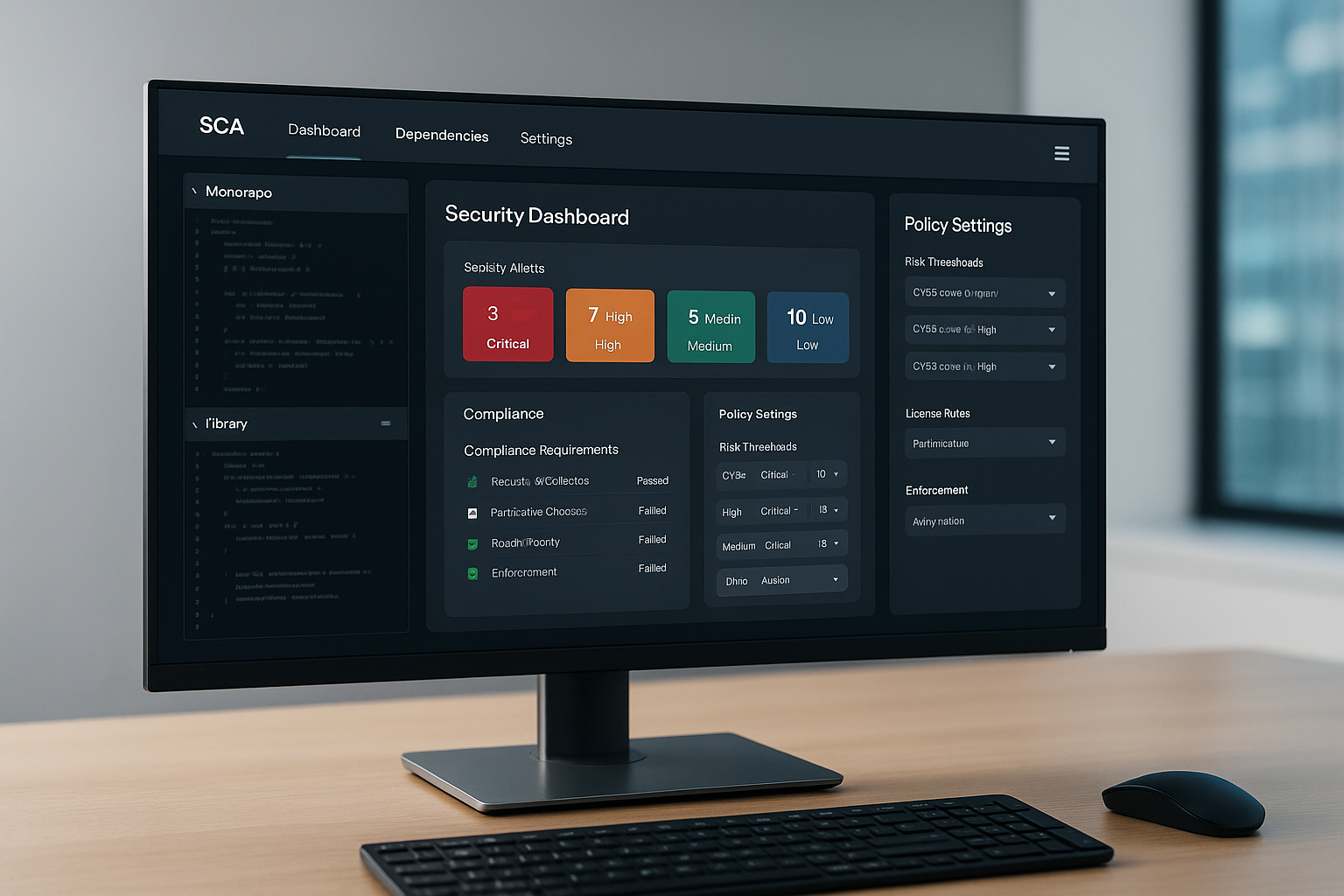The velocity of modern software development, especially in cloud-native and microservices environments, has created unprecedented security challenges. DevSecOps teams are under constant pressure to not only deliver new features fast but to secure applications against a rapidly evolving threat landscape. In this context, Application Security Posture Management (ASPM) has emerged as a critical discipline helping teams proactively manage risk, enforce security policies, and maintain compliance throughout the software development lifecycle (SDLC).
According to guidance from the National Institute of Standards and Technology (NIST), organizations are increasingly expected to “integrate security throughout the SDLC,” and tools that automate and unify application security processes are now considered essential. This article explores what ASPM is, why it matters, and the top ASPM tools leading DevSecOps teams trust in 2025.
What is Application Security Posture Management (ASPM)?
ASPM is a strategic approach and a set of technologies designed to provide continuous visibility, assessment, and improvement of an application’s security posture throughout its lifecycle. In simple terms, it allows teams to identify vulnerabilities, prioritize remediation, enforce policies, and ensure compliance all from a unified platform.
Where traditional AppSec solutions may focus on individual parts of the SDLC, ASPM platforms are designed to connect the dots. They aggregate signals from code repositories, CI/CD pipelines, cloud workloads, and runtime environments to give security teams a holistic view of their risk landscape.
Key objectives of ASPM include:
- Unifying disparate security data and alerts
- Automating risk assessment and prioritization
- Mapping vulnerabilities to business context
- Enforcing security controls across development and production
- Streamlining compliance reporting and audit-readiness
According to Microsoft, integrating security into DevOps practices is foundational to DevSecOps, enabling continuous delivery “without sacrificing safety and compliance” (Microsoft Security 101). ASPM makes this vision practical at scale.
Core Capabilities of ASPM Solutions
Leading ASPM tools share several common capabilities that set them apart from point AppSec solutions:
1. Unified Visibility Across Environments
- ASPM aggregates data from source code, infrastructure-as-code (IaC), cloud workloads, and deployed applications, offering a single pane of glass for risk management.
2. Continuous Vulnerability Detection and Prioritization
- Tools monitor for new vulnerabilities in real time, correlating findings with business context to prioritize what matters most.
3. Automated Policy Enforcement
- Security policies such as mandatory code reviews, dependency checks, or compliance controls are enforced automatically across the SDLC, reducing human error.
4. Compliance Tracking and Reporting
- ASPM platforms map technical controls to regulatory frameworks like SOC 2, HIPAA, and NIST SP 800-218, streamlining compliance and audit processes.
5. Integration with CI/CD and Developer Workflows
- Deep integrations with tools like GitHub, GitLab, Jenkins, and major cloud providers make ASPM seamless for developers.
6. Developer-Centric Remediation
- Rather than only raising alerts, modern ASPM solutions offer in-context fixes, code suggestions, and automated pull requests to help developers remediate issues quickly.
The Business Case: Why DevSecOps Teams Prioritize ASPM
Today’s software is more complex, distributed, and interconnected than ever. With the explosion of APIs, containers, and microservices, the attack surface has grown, making manual security processes insufficient.
Key Reasons DevSecOps Teams Rely on ASPM:
- Proactive Risk Management: ASPM shifts security from a reactive afterthought to a proactive, continuous process, allowing teams to address issues before they reach production.
- Reduced Alert Fatigue: By correlating and prioritizing alerts, ASPM helps teams focus on the highest risks rather than being overwhelmed by noise.
- Compliance Made Easier: Automated mapping to frameworks like NIST and SOC 2 accelerates audit prep and reporting.
- Business Continuity: Real-world breaches from supply chain attacks to misconfigured cloud workloads often stem from poor application security posture. ASPM helps prevent these incidents by ensuring ongoing vigilance (US-CERT).
- Developer Productivity: Integrated, actionable feedback means security is a help not a blocker for modern development teams.
As threats escalate and regulatory expectations tighten, ASPM is rapidly shifting from “nice to have” to “mission-critical” for organizations of all sizes.
Top Application Security Posture Management Tools for DevSecOps (2025)
With a crowded market, choosing the right ASPM platform can be daunting. Below, we profile the leading ASPM tools that DevSecOps teams are relying on in 2025. (Selection based on market presence, analyst reviews such as Gartner, and practitioner feedback.)
1. Arnica
Website: arnica.io
Overview:
Arnica is a standout in this space for teams that want real automation and actionable remediation. Designed with the modern developer in mind, Arnica connects seamlessly to source code, CI/CD, and cloud environments, giving teams a clear view of risk at every stage. What makes Arnica unique is its focus on developer experience.
The platform goes beyond detection and offers direct, code-level fixes, meaning developers don’t just see a problem they get the steps to resolve it within their daily tools. This approach helps organizations close the loop on vulnerabilities before they ever reach production.
Arnica also puts an emphasis on visibility and policy enforcement. Security teams can define and automate policies, track violations, and generate compliance-ready reports, all without breaking the developer’s workflow. The result is a balanced approach where security requirements and delivery speed coexist. For companies looking for a way to scale security without adding friction, Arnica delivers a blend of automation, context, and usability that’s hard to match.
Key Features:
- Code Risk Detection: Scans source code and pipelines for vulnerabilities, misconfigurations, and policy violations
- Automated Remediation: Offers one-click fixes and auto-generated pull requests, empowering developers to resolve issues rapidly.
- CI/CD Security: Monitors and enforces security controls across major CI/CD systems.
- Real-time Policy Enforcement: Customizable policies that adapt to your development environment.
- Comprehensive Reporting: Visualizes risk across teams, projects, and environments for leadership and auditors.
Ideal For:
Cloud-native teams prioritizing automation, scale, and a seamless developer experience.
2. Wiz
Overview:
Wiz is renowned for its cloud-native security platform, offering comprehensive visibility and risk assessment for applications running across AWS, Azure, GCP, and hybrid environments. Its ASPM capabilities include unified vulnerability management, compliance automation, and deep cloud integration.
Key Features:
- Cloud infrastructure risk mapping
- Automated compliance with major standards (SOC 2, HIPAA)
- Visualization of application and infrastructure interdependencies
- Integration with SIEM and DevSecOps pipelines
Ideal For:
Enterprises with large, complex cloud footprints requiring deep visibility and automation.
3. Phoenix Security Platform
Website: Phoenix Security Platform on Gartner
Overview:
Phoenix Security Platform provides robust policy enforcement and supports open-source compatibility, making it ideal for organizations looking to secure modern application delivery. Its ASPM features focus on integrating security into the continuous delivery process, allowing teams to innovate without sacrificing security.
Key Features:
- Security policy automation for CI/CD
- Automated compliance and audit tracking
- Vulnerability scanning for open-source dependencies
- Insights into release risk and code quality
Ideal For:
DevOps teams embracing open-source toolchains and rapid release cycles.
4. OX Security Platform
Website: OX Security Platform on Gartner
Overview:
OX Security Platform offers an AI-driven approach to vulnerability prioritization and developer-friendly remediation. It integrates directly with code repositories and CI/CD pipelines, making shift-left security scalable for fast-moving teams.
Key Features:
- AI-powered vulnerability detection
- Developer-focused workflows and suggestions
- Seamless GitHub/GitLab integration
- Automated reporting and compliance mapping
Ideal For:
Teams seeking advanced AI capabilities for proactive, developer-empowered security.
5. Apiiro ASPM Platform
Website: Apiiro ASPM Platform on Gartner
Overview:
Apiiro specializes in securing the software supply chain, offering deep insight into SDLC risks from code to cloud. Its ASPM platform helps organizations identify supply chain threats and maintain compliance with industry regulations.
Key Features:
- Supply chain risk management
- Continuous SDLC monitoring
- Real-time policy enforcement
- Regulatory compliance mapping
Ideal For:
Organizations with complex software supply chains and strong compliance needs.
6. Black Duck
Overview:
Black Duck by Synopsys is a leader in open-source risk management, with ASPM capabilities focused on software composition analysis (SCA). It helps organizations identify and mitigate vulnerabilities in third-party and open-source components.
Key Features:
- Comprehensive SCA and open-source vulnerability management
- License compliance tracking
- Automated policy enforcement for dependencies
- Integration with CI/CD and developer tools
Ideal For:
Development teams with heavy reliance on open source libraries and components.
7. Other Notable Tools
Aqua Security, Prisma Cloud, Snyk
These platforms also provide robust ASPM capabilities, each with unique strengths in cloud workload protection, developer tooling, and integration flexibility. For more insight, see Gartner’s market reviews.
Choosing the Right ASPM Tool: A DevSecOps Checklist
Selecting the best ASPM platform for your team involves careful consideration of both technical and organizational requirements. Here’s a practical checklist, grounded in industry best practices:
- Scalability: Can the platform support your current and projected application portfolio?
- Integration: Does it connect with your source code management, CI/CD, and cloud environments?
- Automation: Are policy enforcement and remediation workflows truly automated?
- Developer Experience: Are remediations actionable and easy for developers to implement?
- Compliance Support: Does the tool map controls to frameworks relevant to your industry?
- Visibility: Does leadership get clear, real-time reporting across teams and assets?
- Support and Community: Is there reliable support and active community engagement?
- Cost: Are pricing and licensing aligned with your budget and growth plans?
Tip: Consider running a proof-of-concept (POC) with shortlisted tools to assess fit in your real-world workflows.
The Future of ASPM: Trends & Predictions
The ASPM space is rapidly evolving. Here’s what’s next:
- AI and ML-Driven Security:
Expect ASPM tools to offer even more advanced threat detection, root cause analysis, and predictive risk scoring using AI and machine learning. - Shift-Left Security:
Deeper integrations with developer IDEs and real-time code feedback will become standard, empowering teams to catch issues earlier. - Automated Compliance:
Regulations are tightening worldwide, and ASPM platforms will play an increasing role in automating compliance evidence collection and reporting. - Security-as-Code:
Policy-as-code and security-as-code will become foundational, enabling dynamic enforcement and version control for security policies. - Supply Chain Focus:
As software supply chain attacks rise, ASPM tools will add enhanced features for third-party risk visibility and remediation.
By staying current and adopting future-ready tools, DevSecOps teams can better protect their organizations and stay ahead of both attackers and auditors.
Conclusion
Application Security Posture Management is no longer an option for high-velocity development teams; it's a necessity. As attackers grow more sophisticated and regulations more demanding, DevSecOps teams need unified, automated, and developer-friendly solutions.
For teams committed to shipping secure, reliable software at speed, Application Security Posture Management is the new normal. The best platforms make security seamless, keeping development moving while ensuring nothing slips through the cracks. With platforms like Arnica leading the way, organizations have access to tools that offer deep automation, real-world usability, and support for compliance requirements that continue to grow more demanding. Choosing the right ASPM solution is now a strategic decision, one that can determine how well an organization is able to defend itself not just today, but as the security landscape shifts in the years ahead.
Ready to see how Arnica can transform your application security? Book a demo or reach out to our team today.
Reduce Risk and Accelerate Velocity
Integrate Arnica ChatOps with your development workflow to eliminate risks before they ever reach production.




